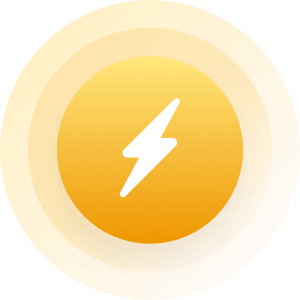| Topic: Meteor Showers- Peek In August | |
|---|---|
|
http://www.washingtonpost.com/national/health-science/skywatch-perseid-meteor-showers-will-peak-in-mid-august/2015/08/01/c2cb29e4-379a-11e5-b673-1df005a0fb28_story.html/
By BlaineP. Friedlander Jr. August 1 at 5:44 PM Shout out for shooting stars! Should you desire relief from Washington’s unrelenting midsummer heat, the heavens offer a shower — that is, the Perseid meteor shower — peaking in mid-August. Provided we get clear, cloudless night skies, the annual Perseids probably will put on a nice display, especially at their peak on the nights of Aug. 12-13, with a heavier dose of meteors toward the morning hours, according to the Royal Astronomical Society of Canada. On the evening of Aug. 12, the waning crescent moon sets at 6:44 p.m., according to the U.S. Naval Observatory. Because the moon is on the verge of its new phase, the darker sky — free of a moonlight — means more meteors to see. At the peak, after midnight Aug. 13, the Royal Astronomical Society predicts about 90 meteors an hour, and the American Meteor Society (AMS) predicts about 100. (You won’t be able to see all of them.) Sky gazers can enjoy an occasional Perseid meteor from now through the peak, and then until about Aug. 26, the AMS says. Shooting stars occur when tiny, dirty pieces of comets break away on trips around the solar system — and that comet dirt leaves a celestial trail. When Earth passes through that trail, the dusty particles strike our atmosphere, burning up the minuscule rocks — and we get to see a light show. The Perseid meteors result from comet 109P/Swift-Tuttle. Co-discoverer Horace P. Tuttle spotted it in 1862, and in his career, he later worked as an astronomer at the Naval Observatory in the District. He died in 1923 and is buried in an unmarked grave at Oakwood Cemetery in Falls Church near Seven Corners. Saturn opens up August’s evening heavens in the south at sunset now, and then the south-southwest late in the month. The ringed planet — loitering in the constellation Libra — is seen at zero magnitude (bright). This large, gaseous planet sets after 1 a.m. now, and then sets about midnight Aug. 20. In the western sky at sunset now, the big, gassy Jupiter is low and follows the sun, while the fleet Mercury makes a valiant attempt at visibility, close to the horizon. Jupiter and Mercury pass each other later this week, but their proximity to the horizon and the sun makes them difficult to discern. Our neighboring planet Mars rises in the eastern morning sky just before the sun, but the red planet may be hard to spot at 1.7 magnitude, which may be dim in twilight. Always cheery Venus (negative fourth magnitude, bright) starts showing up ahead of the sun in the mornings — in the latter days of August. Down-to-Earth events: ● Wednesday — “Behind and Beyond APOD,” a talk about NASA’s popular Astronomy Picture of the Day (apod.nasa.gov), with Alice Allen of the Friends of APOD (www.friendsofapod.org), at the University of Maryland Observatory, College Park. 9 p.m. View the night heavens through telescopes afterward, weather permitting. www.astro.umd.edu/openhouse. ● Saturday — On this family day, discover milestones in aviation and space, “Making the World Smaller and the Universe Larger,” hands-on activities that include meeting an astronaut at 11 a.m. and 1:30 p.m. (Gallery 113) at the National Air and Space Museum, the Mall, 10 a.m.-3 p.m. www.airandspace.si.edu. ● Saturday — Seek respite from cosmopolitan stress by finding refuge in the constellations. Sean O’Brien of the National Air and Space Museum, along with local astronomers, bring you heavenly grandeur at Sky Meadows State Park near Paris, Va. Parking is $5. Arrive before dark. 7:30-10:30 p.m. Park phone: 540-592-3556. tinyurl.com/q92udac. ●Aug. 9 — Thinking outside of the sphere, Marshall Eubanks, chief executive of Asteroid Initiatives in Clifton, Va., talks on “Asteroid Mining” at the regular meeting of the Northern Virginia Astronomy Club, 163 Research Hall, George Mason University, Fairfax. 7 p.m. www.novac.com. ●Aug. 15 — “Exploring the Sky,” hosted by the National Park Service and the National Capital Astronomers, at Rock Creek Park, near the Nature Center in the field south of Military and Glover roads NW. 9 p.m. www.capitalastronomers.org. ●Aug. 20 — “Water, Carbon Dioxide and Comets,” a talk by astronomer Mike Kelley at the University of Maryland Observatory, College Park. 9 p.m. Enjoy the night heavens through telescopes afterward. www.astro.umd.edu/openhouse. Friedlander can be reached at PostSkyWatch@yahoo.com washingtonpost.com © 1996-2015 The Washington Post |
|
|
|
|







